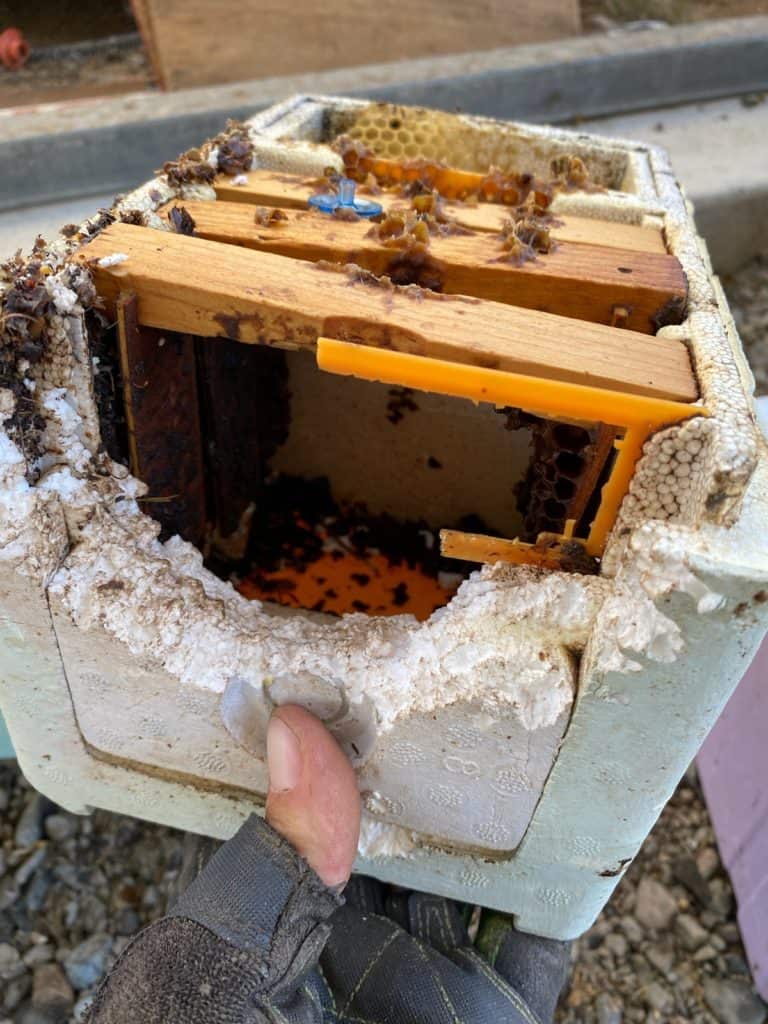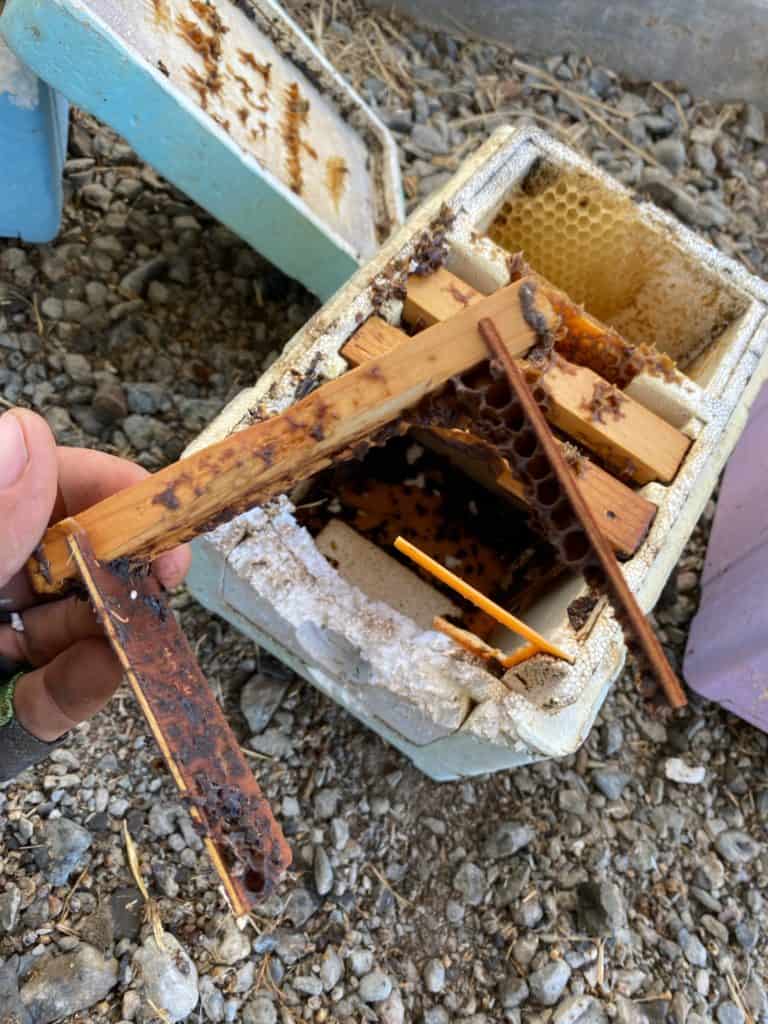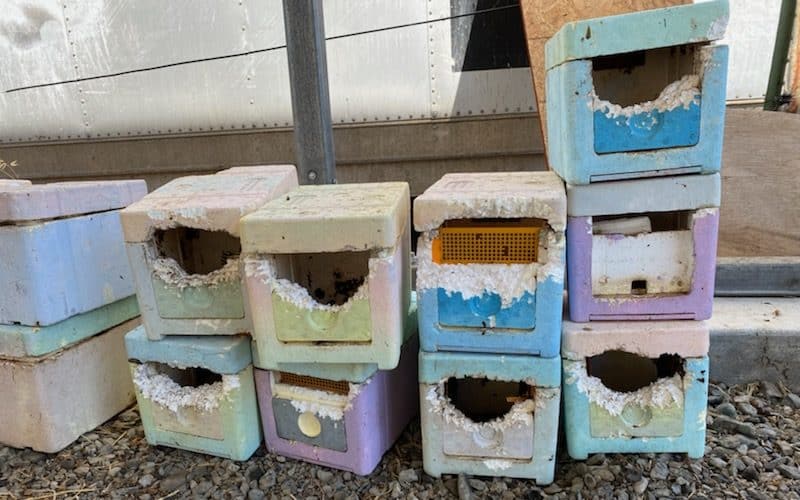One of the queen producers I work with, Joy Pendall, recently told me of some pest and flea problems she’d been having in a few of her yards. When she first told me about the damage these critters were causing I couldn’t believe it – these mammals are not usually much of a pest for beekeepers to contend with, aside from occasionally chewing on the edges of bee boxes to wear down their constantly growing teeth. But Joy and her crew’s stories and photos showed what an impressive amount of destruction that these little varmints managed to accomplish. The pictures (shared in this blog) show the huge holes they had made in the styrofoam boxes that formerly housed mating nucs. Ultimately, they became such a nuisance that she shut down mating in the affected yards early because of them, producing just over half the number of queens she normally would there.
By now you’re probably wondering: Who were those nuisance mammals?
Raccoons? No.
Skunks? No.
Ground squirrels? Yes.
Ground squirrels?
Yes! Ground squirrels.
At first they were chewing through the rear of the styrofoam nucs to access the sugar syrup compartments. Eventually, the squirrels started getting into the actual frames, chewing and eating the brood for protein, just as a bear would. You would think a bear would go for the honey, but they are actually after the protein-rich brood, especially in early spring and fall, when food is scarce (though once they get a taste for brood they can become persistent pests). You wouldn’t think it, but, like the bears, squirrels also really like protein – they will even eat baby birds from the nest, the chirping chicks drawing them in for an easy snack.

There are two other small mammal predators that more commonly cause problems for beekeepers: raccoons and skunks. I have heard stories of raccoons also going for the syrup in Styrofoam nucs, even unscrewing syrup can lids with their nimble, human-like fingers and lapping up the syrup. It is often limited to a small number of clever individuals in an area who learn this trick, and once they are trapped and removed, the problem does not usually reoccur for long periods of time. If not secured, raccoons can also rip the lids off of colonies, going for frames of protein-rich brood, just as the bears and the squirrels do.
Skunks can also be very pesky in the bee yard, and they usually leave plenty of evidence that they were there in the form of feces filled with bee parts, and scratch marks and holes made on the front of hives and pallets. Unlike the bears, these odorous invaders are going for the adult bees. A single skunk can eat 1/2 pound of bees in a single night, and a family of skunks can decimate a yard – especially in the winter when the bees are not rearing brood to replace what’s eaten. They agitate a colony by scratching, digging, and then waving or dragging their tail in front of the hive entrance. The bees come rushing out to defend the colony and become stuck in the tail of the skunk, who hungrily gobbles them down. This behavioral bee-catching trick to earn an easy meal (minus the stings, which they don’t seem to mind) is also something skunks learn from one another.
But back to the squirrels! Here are some more pictures of the squirrel damage to the mating nucs. Notice how they also chewed the frames to eat the brood for a protein source.


I wanted to thank Joy Pendall for sharing her encounters with this oddity of a honey bee pest and the images of the damage they caused. I have heard of ground squirrels chewing boxes before, but this is a new level of attack, and their intense interest in the resources in these boxes may indicate the scarcity of other available food in the area, due to repeated years of drought. Fortunately for Joy, there is only one area in her operation where the squirrels are causing this damage!
